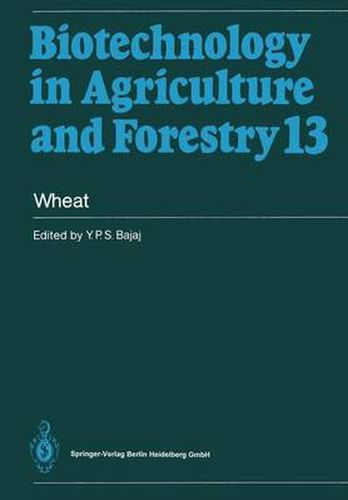Readings Newsletter
Become a Readings Member to make your shopping experience even easier.
Sign in or sign up for free!
You’re not far away from qualifying for FREE standard shipping within Australia
You’ve qualified for FREE standard shipping within Australia
The cart is loading…






This title is printed to order. This book may have been self-published. If so, we cannot guarantee the quality of the content. In the main most books will have gone through the editing process however some may not. We therefore suggest that you be aware of this before ordering this book. If in doubt check either the author or publisher’s details as we are unable to accept any returns unless they are faulty. Please contact us if you have any questions.
Wheat, which is the second most important cereal crop in the world, is being grown in a wide range of climates over an area of about 228 945 thou sand ha with a production of about 535 842 MT in the world. Bread wheat (Triticum aestivum L. ) accounts for 80% of the wheat consumption, howe ver, it is attacked by a large number of pests and pathogens; rusts and smuts cause enormous damage to the crop and reduce the yield drastically in some areas. The major breeding objectives for wheat include grain yield, earliness, resistance to lodging and diseases, spikelet fertility, cold tolerance, leaf duration and net assimilation rate, fertilizer utilization, coleoptile length, nutritional value, organoleptic qualities, and the improvement of charac ters such as color and milling yield. The breeding of wheat by traditional methods has been practiced for centuries, however, it has only now come to a stage where these methods are insufficient to make any further breakthrough or to cope with the world’s demand. Although numerous varieties are released every year around the world, they do not last long, and long-term objectives cannot be realized unless more genetic variability is generated. Moreover, the intro duction of exotic genetic stocks and their cultivation over large areas results in the depletion and loss of the native germplasm pool.
$9.00 standard shipping within Australia
FREE standard shipping within Australia for orders over $100.00
Express & International shipping calculated at checkout
This title is printed to order. This book may have been self-published. If so, we cannot guarantee the quality of the content. In the main most books will have gone through the editing process however some may not. We therefore suggest that you be aware of this before ordering this book. If in doubt check either the author or publisher’s details as we are unable to accept any returns unless they are faulty. Please contact us if you have any questions.
Wheat, which is the second most important cereal crop in the world, is being grown in a wide range of climates over an area of about 228 945 thou sand ha with a production of about 535 842 MT in the world. Bread wheat (Triticum aestivum L. ) accounts for 80% of the wheat consumption, howe ver, it is attacked by a large number of pests and pathogens; rusts and smuts cause enormous damage to the crop and reduce the yield drastically in some areas. The major breeding objectives for wheat include grain yield, earliness, resistance to lodging and diseases, spikelet fertility, cold tolerance, leaf duration and net assimilation rate, fertilizer utilization, coleoptile length, nutritional value, organoleptic qualities, and the improvement of charac ters such as color and milling yield. The breeding of wheat by traditional methods has been practiced for centuries, however, it has only now come to a stage where these methods are insufficient to make any further breakthrough or to cope with the world’s demand. Although numerous varieties are released every year around the world, they do not last long, and long-term objectives cannot be realized unless more genetic variability is generated. Moreover, the intro duction of exotic genetic stocks and their cultivation over large areas results in the depletion and loss of the native germplasm pool.